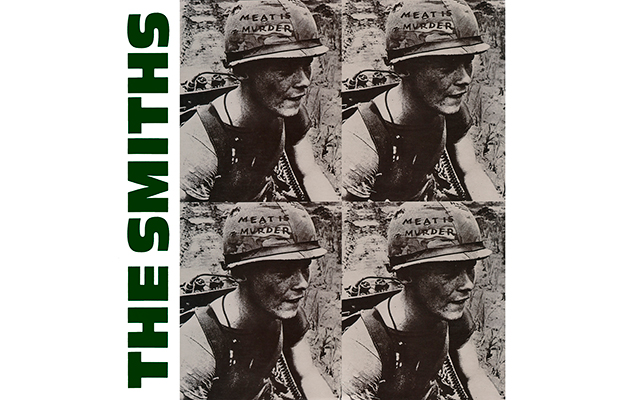Shortly before recording began on Meat Is Murder, both Morrissey and Marr had moved back to Manchester after a period living in London. “I used to drop Morrissey off at this big, Gothic, part-timbered Scooby- Doo style nightmare house he’d bought in Hale Barns,” says Harper. “He put his mother in it. It was the type of house an old person would live in; if you went to visit your grandparents and they’d done quite well and they liked having a copper-burnished fire surround and medieval-looking front door with ironmongery studded through it. Johnny was in Hale. He bought the old vicarage.” Harper would ferry the band up and down the M6, from their homes to engagements in London. “If it was all four of them, Morrissey and Johnny had the seats behind me. Andy and Mike were further back. There was much twisting and turning, chitter chatter, and laughing and playing of cassettes. If it was Morrissey on his own, that was a different kettle of fish. He had his own status to uphold. He’d start at the back, then as the journey went on he got progressively more bored, he’d work his way forwards so he had something to gawp at.”
During 1984, The Smiths had released three singles as well as two albums – their debut in February, followed by Hatful Of Hollow, a compilation of BBC radio sessions, in November. As 1985 opened, their already prolific output suddenly became complicated. In January – 14 days before Meat Is Murder was released – Rough Trade belatedly reissued former B-side “How Soon Is Now?”, as an A-side single in its own right. The track was later included on the US edition of Meat Is Murder. “It was all a bit chaotic,” confirms Andy Rourke. “We always felt a little short-changed about their preparation for supply and demand with our records. That obviously affected our chart positions, and so therefore our morale. Geoff [Travis] was doing the best he could for us, maybe it wasn’t just good enough. They just weren’t prepared. Before us, they’d been dealing with quite small indie bands. We were the first mainstream band they’d ever looked after.”
“The Smiths were the goose that was going to lay the golden egg,” says Richard Boon. “The late Scott Piering was plugging away at radio, Mike Hinc, their booking agent, was working really hard. So were the band. Everybody recognised talent and it was a mission to make the public recognise it. But there was tension between the band and the label and they were quick to point out any failings. But the band never accepted any failings of their own.”
The band were also without management at this critical time. “Nobody was steering our boat for us,” confirms Rourke. “While recording Meat Is Murder was great fun, it put a strain on Johnny and Morrissey’s relationship. If anybody had a question about the band that usually would go through management, Johnny would have to take the phone call. It would interfere with the recording process and stress him out; it wasn’t good for Johnny. We definitely needed a manager, but I think we were unmanageable.”
To accompany the release of Meat Is Murder – on February 11, 1985 – The Smiths set out on a 23-date UK tour, which finished at London’s Royal Albert Hall on April 6. Their tour the previous year in support of their debut album had followed a more typical trajectory of university and polytechnic student unions. But for Meat Is Murder, the band upscaled to theatres, town halls and arts centres. Notwithstanding such live achievements, the album’s only single, “That Joke Isn’t Funny Anymore”, peaked at No 49: a further cause of friction with Rough Trade.
The band began the tour travelling to shows in their white Mercedes limo, driven by tour manager Stuart James – who passed away soon after this interview took place. James recalls the band’s strong sense of camaraderie. “They were very tight, but musically, Johnny was the MD,” he says. “Johnny and Morrissey would be talking and suggesting ideas. Then Johnny would present it back to everyone.”
“Both Morrissey and Johnny felt that the aesthetic was really important,” continues John Featherstone. “We spent a lot of time spitballing ideas. Johnny brought up a Stones piece from TV that was lit in a really even flat, very bright white. These were the days where you had to go and find a VHS player – so he showed it to Morrissey who said, ‘Maybe we should use that for Meat Is Murder?’ One of the things they liked was very narrow colour palettes. So I lit the whole show through shades of blues and greens, with the exception of ‘Meat Is Murder’. It was such a different song, from a visual standpoint it needed a completely different treatment. So it was lit in just a wash of dripping blood red, to underscore the difference.”



